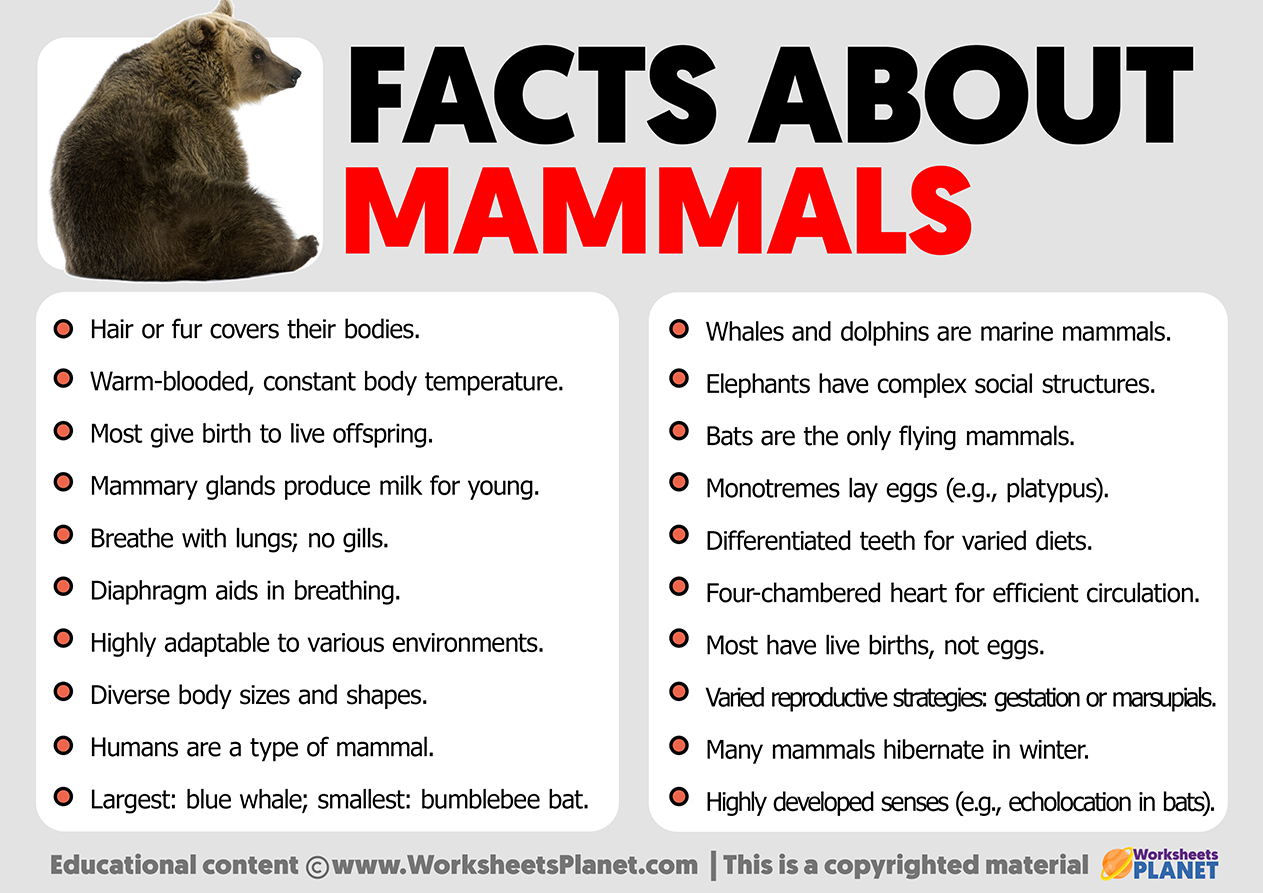A mammal is a warm-blooded vertebrate characterized by several key traits. These include having hair or fur, a four-chambered heart, and typically giving birth to live offspring rather than laying eggs.
Mammals produce milk to nourish their young, with mammary glands being a defining feature.

They exhibit diverse adaptations and inhabit various environments worldwide, from the air (bats) and water (dolphins) to land (humans). Mammals encompass a wide range of species, from tiny shrews to massive whales, making up one of the most diverse and successful animal groups on Earth.
Here you have 20 facts about mammals
- Hair or fur covers their bodies.
- Warm-blooded, constant body temperature.
- Most give birth to live offspring.
- Mammary glands produce milk for young.
- Breathe with lungs; no gills.
- Diaphragm aids in breathing.
- Highly adaptable to various environments.
- Diverse body sizes and shapes.
- Humans are a type of mammal.
- Largest: blue whale; smallest: bumblebee bat.
- Whales and dolphins are marine mammals.
- Elephants have complex social structures.
- Bats are the only flying mammals.
- Monotremes lay eggs (e.g., platypus).
- Differentiated teeth for varied diets.
- Four-chambered heart for efficient circulation.
- Most have live births, not eggs.
- Varied reproductive strategies: gestation or marsupials.
- Many mammals hibernate in winter.
- Highly developed senses (e.g., echolocation in bats).

